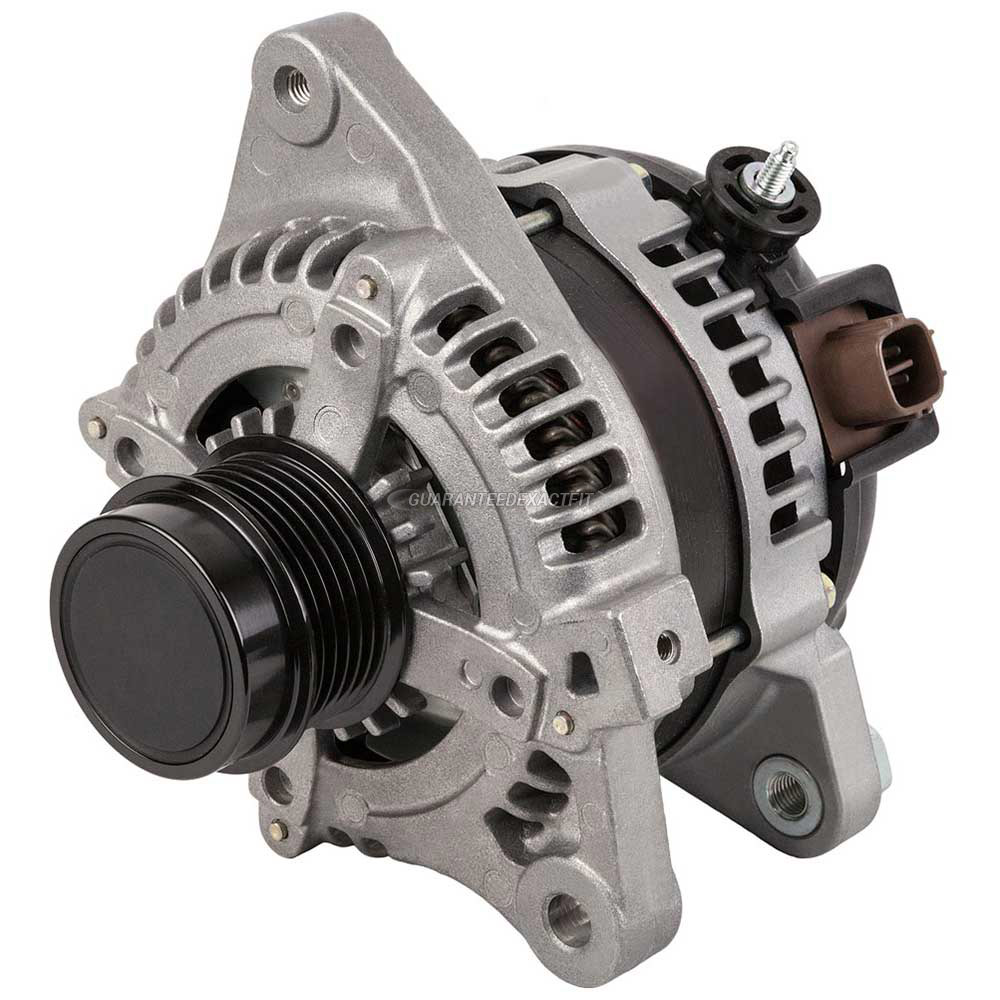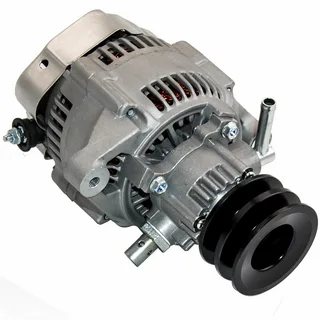If you own a Toyota Hilux and are experiencing issues with your alternator, it may be time for a replacement. The alternator is responsible for charging the battery and providing power to the electrical components of your vehicle. When it starts to fail, you may notice symptoms such as dimming headlights, a dead battery, or difficulty starting your car. To replace the alternator in your Toyota Hilux, you will need a few tools and some basic mechanical knowledge. First, disconnect the negative battery cable to prevent any electrical accidents. Then, locate the Toyota Hilux Alternator and remove the drive belt. This may require loosening or removing other components such as the tensioner pulley or power steering pump.
Understanding The Role Of Your Toyota Hilux’s Alternator
The alternator in your Toyota Hilux plays a vital role in keeping your vehicle running smoothly. It is responsible for charging the battery and powering the electrical systems, including the lights, radio, and air conditioning. Without a functioning alternator, your Hilux would not be able to start, and all the electronic features would be rendered useless.
Think of the alternator as the heart of your vehicle’s electrical system. It generates electrical energy while the engine is running, replenishing the battery and supplying power to the various components. This ensures that your lights are bright, your radio blasts your favorite tunes, and your air conditioning keeps you cool on those hot summer days.
One of the main functions of the alternator is to keep the battery charged. It does this by converting mechanical energy from the engine into electrical energy. The alternator uses a belt and pulley system connected to the engine, which spins a rotor inside the alternator to generate electricity.
In addition to charging the battery, the alternator also regulates the voltage to prevent overcharging or undercharging. It maintains a steady voltage output, typically around 14 volts, to ensure the electrical system operates efficiently and protects the battery from damage.
The Impact Of Alternator Failure On Your Vehicle’s Performance
When your Toyota Hilux’s alternator fails, it can have a significant impact on your vehicle’s performance. First and foremost, your Hilux cannot start without a functioning alternator. The alternator is responsible for charging the battery, and without a charged battery, your vehicle simply won’t turn on.
But it’s not just about starting the car. Alternator failure can also lead to a host of other issues that affect your overall driving experience. For instance, your electrical systems will be compromised. Your lights may not be as bright, making it difficult to see the road at night. Your radio may cut out or not work, depriving you of your favorite tunes during long drives. And your air conditioning may fail, leaving you without cool air on hot summer days.
Furthermore, alternator failure can put strain on other components of your vehicle. When the alternator is not functioning properly, it can cause the battery to overwork, potentially shortening its lifespan. Additionally, without a functioning alternator, your vehicle’s electrical systems may draw power directly from the battery, putting added stress on it and increasing the risk of a dead battery.
 Steps to Take When Your Hilux Alternator Fails
Steps to Take When Your Hilux Alternator Fails
If your Toyota Hilux’s alternator fails, it’s important to take action promptly to prevent further damage and get your vehicle back on the road. Here are the steps you should take when your Hilux alternator fails:
- Safely pull over: If you notice any of the symptoms of alternator failure, such as dimming headlights or a dead battery, pull over to a safe location as soon as possible. Continuing to drive with a failing alternator can put additional strain on your vehicle’s electrical system.
- Check the alternator belt: Inspect the alternator belt for any signs of damage, such as cracks or fraying. A loose or damaged belt can cause the alternator to stop working properly. If the belt is damaged, it may need to be replaced.
- Jump-start your vehicle: If your battery is dead, you’ll need to jump-start your Hilux to get it started. Use jumper cables and another vehicle to give your battery the boost it needs. Be sure to follow the proper safety precautions and consult your vehicle’s owner’s manual for specific instructions.
- Get your alternator tested: Once you’ve jump-started your Hilux, a professional must test your alternator. They can use specialized equipment to measure the output of your alternator and determine if it needs to be repaired or replaced.
- Repair or replace the alternator: Depending on the severity of the alternator failure, it may need to be repaired or replaced. If the issue is minor, a skilled technician may be able to fix the problem and restore your alternator’s functionality. In more severe cases, the alternator may need to be replaced entirely.
Replacing Vs. Repairing: Which Is Best For Your Hilux Alternator?
When faced with a failing Hilux alternator, the decision between replacing or repairing can be a tough one. It ultimately depends on the severity of the issue and your budget.
In some cases, a simple repair may be all that’s needed to get your alternator back in working order. This can involve fixing or replacing specific components within the alternator, such as the voltage regulator or bearings. Repairing your alternator can be a more cost-effective option, especially if the issue is minor and can be easily resolved.
However, there are instances where replacing the alternator is the best course of action. If the alternator is severely damaged or has reached the end of its lifespan, replacing it entirely may be the most reliable and long-term solution. A brand-new alternator will ensure optimal performance and minimize the risk of future failures.
Ultimately, it’s best to consult with a qualified technician who can assess the condition of your Hilux’s alternator and provide expert advice. They will be able to determine whether a repair or replacement is the most suitable option based on the specific circumstances.
How To Maintain Your 3RZ-FE Hilux Alternator To Prevent Future Failures
Maintaining your 3RZ-FE Hilux alternator is essential to prevent future failures and ensure the longevity of your vehicle’s electrical system. By following a few simple maintenance tips, you can keep your alternator in top condition and avoid costly repairs or replacements.
First and foremost, regularly inspect the alternator belt. Look for any signs of damage, such as cracks, fraying, or excessive wear. If you notice any issues, replacing the belt immediately is important. A loose or damaged belt can cause the alternator to stop working properly, leading to a host of electrical problems.
Next, make sure to keep the alternator clean and free of debris. Over time, dirt and grime can build up on the alternator, hindering its performance. Use a soft brush or cloth to gently remove any dirt and ensure that the cooling fins are clear. This will help prevent overheating and ensure optimal functioning.
Additionally, check the voltage regulator regularly. This component is responsible for regulating the voltage output of the alternator. If you notice any fluctuations or inconsistencies in your vehicle’s electrical system, it may indicate a faulty voltage regulator. Consult a professional technician to have it inspected and replaced if necessary.
Lastly, it’s important to maintain a healthy battery. A weak or damaged battery can put strain on the alternator, leading to premature failure. Regularly check the battery’s fluid levels, clean the terminals, and test its charge. If the battery is old or showing deterioration, consider replacing it to avoid further issues.
Testing Your Hilux Alternator’s Output
Once you suspect an issue with your Toyota Hilux’s alternator, it’s crucial to test its output to determine if it’s functioning properly. Testing the output of your Hilux alternator is a relatively straightforward process that can be done with the help of a multimeter.
To begin, you’ll need to locate the alternator in your Hilux. It’s typically located on the side of the engine and is easily identifiable by its belt and pulley system. Once you’ve located the alternator, make sure the engine is turned off and disconnect the negative terminal of the battery to ensure safety.
Next, set your multimeter to the voltage setting and attach the positive lead to the battery’s positive terminal. Then, connect the negative lead to the positive terminal of the alternator. This will allow you to measure the output voltage directly from the alternator.
With the multimeter connected, start the engine and let it idle. Take note of the reading on the multimeter. Ideally, the alternator should be outputting around 14 volts. If the reading is significantly lower or higher, it may indicate an issue with the alternator.
To further test the alternator, you can increase the engine speed to around 2000 RPM. The multimeter reading should remain consistent and not fluctuate drastically. Any significant fluctuations could be a sign of an issue with the alternator’s voltage regulator.
If the voltage readings from the alternator are outside the expected range or there are any fluctuations, it’s best to consult a professional technician. They will be able to diagnose the issue accurately and provide the necessary repairs or replacements to ensure your alternator is functioning optimally.
FAQs
1. Q: How long does a Toyota Hilux alternator typically last?
A: The lifespan of a Toyota Hilux alternator can vary depending on various factors, such as driving conditions and maintenance. On average, an alternator can last anywhere from 80,000 to 150,000 miles or around 8 to 12 years. However, regular maintenance and addressing any issues promptly can extend its lifespan.
2. Q: Can I replace the alternator myself, or should I seek professional help?
A: While it is possible to replace the alternator yourself if you have the necessary skills and tools, it is generally recommended to seek professional help. Replacing an alternator involves complex electrical connections and removing other components, which can be challenging for inexperienced individuals. A professional technician will ensure proper installation and help avoid any further damage.
3. Q: How much does it cost to replace a Toyota Hilux alternator?
A: The cost of replacing a Toyota Hilux alternator can vary depending on factors such as the model year, labor costs, and whether you choose a new or refurbished alternator. On average, you can expect to pay between $300 and $800 for a replacement, including parts and labor.
4. Q: Can a failing alternator drain the battery completely?
A: Yes, a failing alternator can drain the battery completely. The alternator is responsible for charging the battery, so if it is not functioning properly, the battery will not receive the necessary charge to stay fully charged. This can result in a dead battery, leaving you stranded.
5. Q: How often should I have my Toyota Hilux alternator inspected?
A: It is recommended to have your Toyota Hilux alternator inspected during regular maintenance visits, which are typically every 6 months or 6,000 to 10,000 miles. Regular inspections can help catch any potential issues early and prevent more significant failures.
Conclusion
In conclusion, understanding the role of your Toyota Hilux’s alternator is crucial for maintaining a reliable and well-performing vehicle. The alternator plays a vital role in charging the battery and powering the electrical systems, ensuring that your lights are bright, your radio is blasting your favorite tunes, and your air conditioning is keeping you cool on those hot summer days. By recognizing the common symptoms of a failing alternator, such as dimming headlights, a dead battery, or issues with electrical components, you can take action and prevent further damage.


